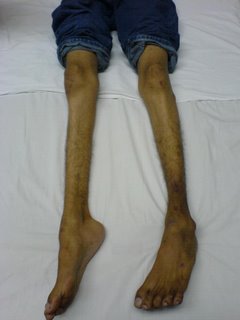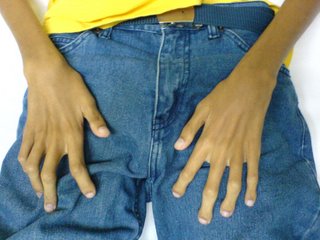Charcot-Marie-Tooth disease

This patient came for an elective investigation in neurology clinic today PM.
Scenario: 20-year-old, male with difficulty in walking for 8 years. Examine the LL.
Examination reveals LMN lesion. There is wasting of the lower limbs muscle. There is no fasciculation and the tone is reduced. The weakness involves predominantly the distal muscles. The extensors of the toes and feet are weak. The knee and ankle jerks are absent and the plantar reflexes show no response. The sensation to pin prick and propioception are preserved.
What do you want to examine next?
a. There is wasting of the small muscles of the hands.
b. He had bilateral foot-drop and high stepping gait.
c. Ask for a family history of similar problem.
Yes, his elder brother also has the similar condition.
Discussion
The diffential diagnosis that should be considered here are:
1. Peripheral neuropathy i.e. motor neuropathy
**Hereditary as suggested by 8 years history of onset and the age of presentation at 12 yo i.e. Charcot-Marie-Tooth ds (HMSN)
**CIDP unlikely because of no sensory involvement
2. Motor neuron disease - Unlikely
** Wrong age of presentation for MND
** No signs to suggest UMN lesion (mixed UMN+LMN)
** No fasciculation (Hallmark for MND)
3. Muscular dystrophy - Unlikely
** Pseudohypertrophy but not severe wasting
** Predominantly proximal wasting
Conclusion
The diagnosis is Charcot-Marie-Tooth disease.
Labels: Neurology








3 Comments:
The legs do not look like "inverted champagne bottles"?
Not well exposed. I had to admit that the quadriceps are wasted. However, the weakness predominantly involve the distal muscles.
The common peroneal nerve is not thickened. There is no pes cavus.
Post a Comment
<< Home